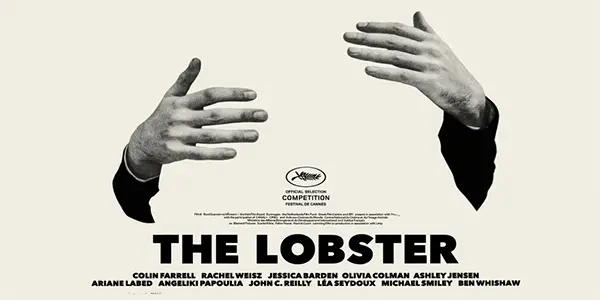Cinematic Advertisements: Past, Present & Future Of Posters

Joseph is an Austro-American media and communications student currently living…
Posters have gone through quite a history within film marketing. As part of the everyday advertisement, their roles are always shifting. Once, their purpose was to peak the interest of by-passers. Alongside newspaper ads, they were the main selling point for films for some time. After a while, though, most people focused on trailers, as it showed more of a film than posters ever could. This lead to some fearing an over-saturation of footage before a film’s release.
Yet with the digital age, posters have found a new way to survive as a marketing tool. In a way, they are their very own art form that lives alongside films. On the flip side, some posters feel more stitched together as a last result. It begs the question: how important are posters as an advertising form? What future do they still hold moving forward?
To Be An Ad, Or To Be Art
Posters are quite bizarre. They come in many shapes and sizes. Some people see them on banners or billboards. The most common depictions are the posters we see in cinemas. Films with bigger budgets can afford advertising them in various cities as well. From an advertising perspective, it is nothing special.
Yet, anyone who follows websites such as Mondo may have noticed something. These posters have gained a new importance on the Internet. Artists from all over the world try to create their own interpretation of posters. They add their own personal touches, and turn a classic form of advertisement into art. Maybe the artist prefers a minimalistic approach, or an extravagant one; either way it adds variety. At some times, these independent posters even overshadow the official ones.

Posters changed from an element for an ad campaign to a statement. They are a natural extension of a film that also highlights its themes. It pushes the boundaries of how a film will be perceived pre-viewing. Unlike trailers, it does not give away any of the film’s important plot-lines. Instead, it hints at what a viewer can expect but does not spoil anything. It is a good alternative to those that want to avoid the many published trailers. Also, some people might love the design of a poster so much they want to own it. Collectors will often try to get their hands on their personal favorites.
Technology Changes Everything
Not all designs are very favorable, as some films also received creative posters. For example, 2015’s The Lobster used the visual to highlight an important element of the film. Yet, many blockbuster films tend to follow a certain pattern. Important characters from the film get splashed onto the canvas, and their importance is shown through the size of their presence on the poster. The background usually uses an asset from the film, or explosions to highlight action. These elements repeat themselves so often, it becomes bland to see. Posters of various films become interchangeable, and it takes away the desired advertising effect.

This is an issue that resulted from our technological jump. Photoshop has made it easier for people to create posters. If done right, it can create some amazing results. Yet, sometimes it is too easy to identify the program behind it. People describe some posters as being “too photoshopped”. Not enough effort does not hide the work behind it. Adding this element with very simplified designs takes away from the poster’s effectiveness. It must be pointed out that not every film allows for a creative poster. Sometimes it is difficult to find a creative concept by a deadline. In the end, it is up to the creativity of the artist that makes these stand out.
A Future of Motion
Here comes the biggest issue to posters. There is a limit to what a film company can do with it. No matter how creative a poster is, it can only function as a way to get people’s attention to a film. It does not ensure that people will actually go and see it. This could be a reason why some posters tend to repeat themselves. There are many clichés that come with this art-form, such as the big red letters that highlight the title of the film. Sometimes the poster shows the entire face of the main actor. Repetition may prove effective, but it has its limits.
In the end, the advertisement that gets people to watch films are the trailers, as they give a much clearer understanding of a film. It allows a person to make the decision to see the film if it interests them. Posters function more as an attention grabber, or as an extra motivator.
Posters may have reached a peak. Creative artists are pushing the boundaries of them. It does not have much room to evolve as a static image. Posters are not confined at cinemas anymore, as they are used in subways or on billboards.
The only way forward is through technology, such as motion posters. These posters combine the elements of a trailer and a poster by making them interactive. Netflix uses this strategy in a creative way. Their posters are no longer static pictures, but rather short gifs. Seeing characters move in a poster could be a way to really grab people’s attention. It allows for potential viewers to interact with the ad. One must question if these are still considered posters, though.
As technology evolves, so will posters. One day, posters could leave the confinement of the medium. As an example, Virtual Reality is adding a new element into the industry. Hopefully, no one remakes The Ring so that the creepy girl crawls out of the poster.
What are your thoughts on the future of cinematic posters?
Does content like this matter to you?
Become a Member and support film journalism. Unlock access to all of Film Inquiry`s great articles. Join a community of like-minded readers who are passionate about cinema - get access to our private members Network, give back to independent filmmakers, and more.
Joseph is an Austro-American media and communications student currently living in Austria, who grew up with film most of his life. Having won a new appreciation of cinema as an art form and as an industry, he aims to learn as much about it as he can.












